Among all the herbs that grace American kitchens, tarragon stands out for its distinctive, slightly sweet, and anise-like flavor. Often called the “King of French Herbs,” tarragon adds an elegant touch to sauces, meats, salads, and seafood. Its aromatic leaves elevate simple dishes into gourmet creations, making it a staple in both professional kitchens and home gardens across the United States.
But tarragon isn’t just about taste—it’s also easy to grow, rich in nutrients, and incredibly versatile. Whether you’re drizzling tarragon butter over steak, mixing it into chicken salad, or crafting a creamy Béarnaise sauce, this herb deserves a place in your culinary and gardening routine.
Let’s explore the world of tarragon—its history, types, growing methods, health benefits, and creative ways to use it in American homes.
1. A Brief History: From French Gardens to American Kitchens
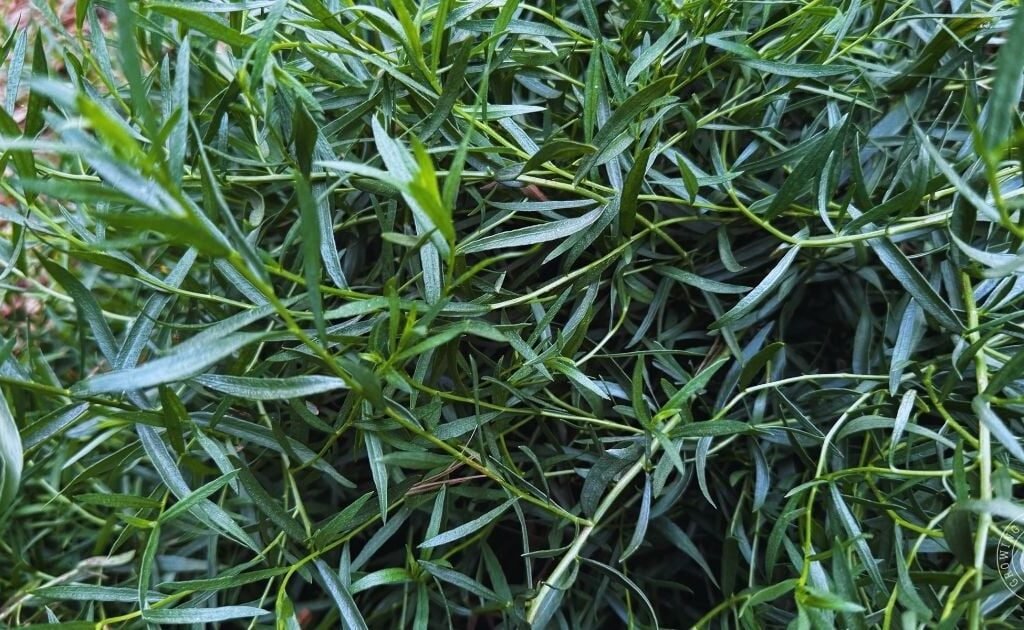
Tarragon (Artemisia dracunculus) has a fascinating history rooted in European cuisine and ancient medicine. Native to Siberia and parts of Asia, tarragon eventually became a cornerstone of French cooking—earning its spot in the famous “fines herbes” blend alongside parsley, chives, and chervil.
French immigrants brought tarragon to the United States, where it quickly gained popularity for its unique licorice-like taste and aroma. Today, tarragon is widely used in American-French cuisine, appearing in everything from roasted chicken to salad dressings and herbal teas.
Its name comes from the Latin word dracunculus, meaning “little dragon,” inspired by its winding roots and potent flavor. In folklore, it was even believed to ward off fatigue and aid digestion—proof that tarragon’s reputation for wellness and energy has ancient roots.
2. The Two Main Types of Tarragon
Not all tarragon is created equal. In American herb gardens, two varieties dominate—French tarragon and Russian tarragon—each with distinct qualities.
French Tarragon (Artemisia dracunculus var. sativa)
- The gold standard for cooking.
- Offers a sweet, subtle licorice flavor and soft, aromatic leaves.
- Sterile, so it cannot be grown from seeds; it must be propagated from cuttings or divisions.
- Ideal for delicate sauces, fish, chicken, and egg dishes.
Russian Tarragon (Artemisia dracunculoides)
- Hardier and easier to grow, but less flavorful and more bitter.
- Suitable for gardeners in colder U.S. regions who want a low-maintenance plant.
- Can be used in vinegars, marinades, or as a substitute when French tarragon isn’t available.
For culinary excellence, French tarragon remains the preferred choice among American chefs and home cooks alike.
3. How to Grow Tarragon in the American Climate
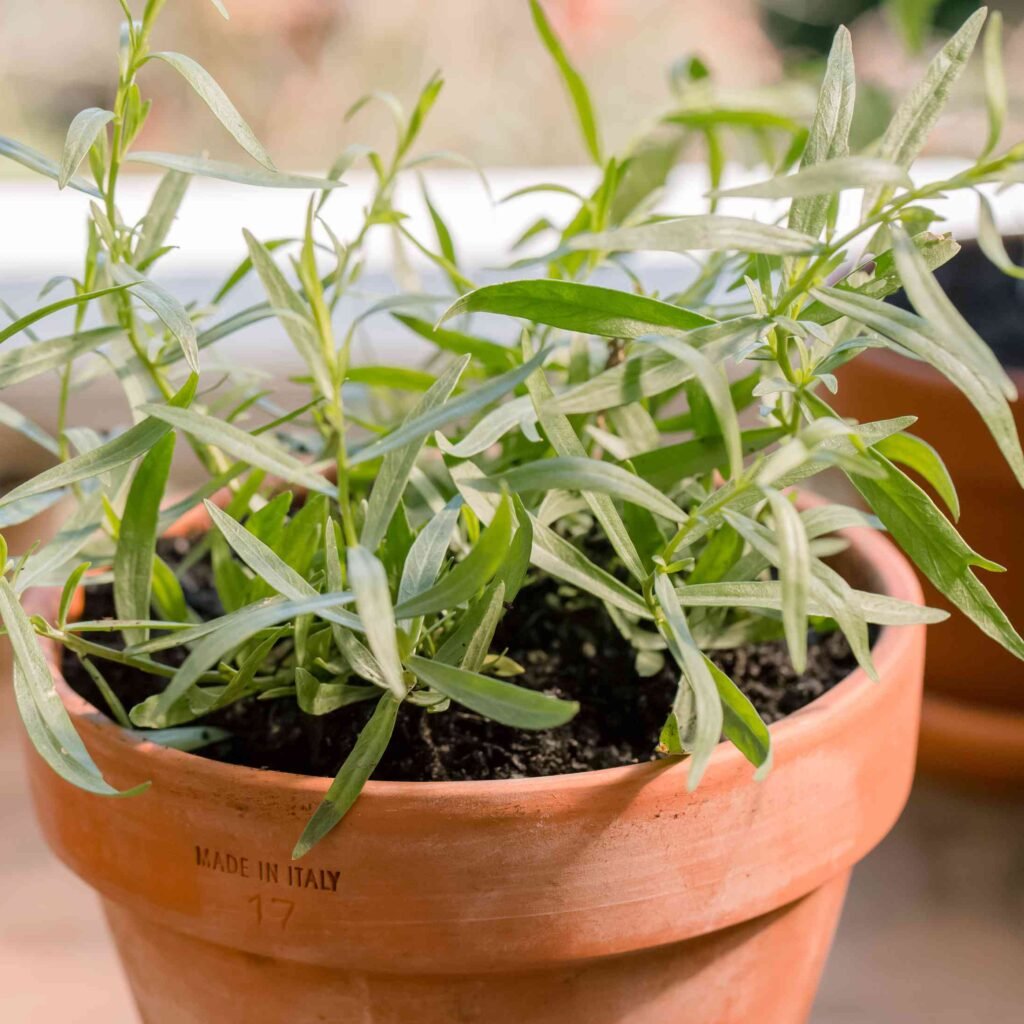
Tarragon thrives in many parts of the United States, particularly in USDA zones 4–9. It’s a perennial herb in warmer regions and can be overwintered indoors in colder climates.
Planting Tips
- Light: Prefers full sun to partial shade (at least 6 hours of sunlight daily).
- Soil: Well-drained, sandy, or loamy soil with a pH between 6.5 and 7.5.
- Propagation: Start from cuttings or root divisions in spring. Avoid seeds for French tarragon as they are sterile.
- Spacing: Plant 18–24 inches apart for proper airflow.
Watering and Maintenance
- Water moderately—keep soil moist but not soggy.
- Avoid overwatering, which can cause root rot.
- Trim regularly to encourage bushy growth and prevent flowering, which weakens flavor.
In northern states, grow tarragon in containers that can be brought indoors before frost. It does well on sunny kitchen windowsills during winter.
4. Harvesting and Storing Tarragon
Harvesting tarragon is easy and rewarding. The leaves are most flavorful just before flowering, usually in late spring or early summer.
How to Harvest
- Cut stems about 6–8 inches long using scissors or shears.
- Always harvest in the morning after the dew dries for maximum flavor.
- Avoid cutting more than one-third of the plant at a time.
Preserving Tarragon
- Drying: Hang stems upside down in a dark, well-ventilated area. Once dry, strip the leaves and store them in airtight containers.
- Freezing: Place chopped tarragon leaves in ice cube trays with olive oil or water for easy use in future dishes.
- Infusing: Steep fresh tarragon sprigs in vinegar for a flavorful herb-infused condiment.
Properly dried or frozen tarragon keeps its taste for up to a year—perfect for year-round culinary creativity.
5. Cooking with Tarragon: The Flavor of French Elegance
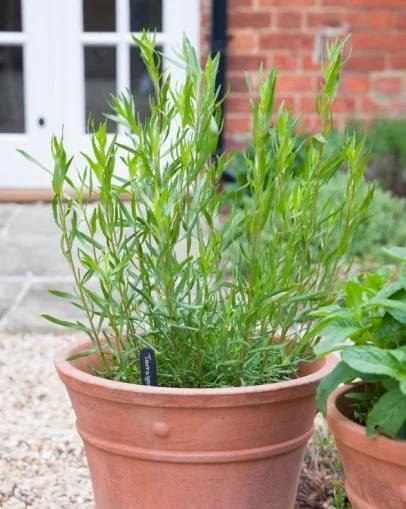
Tarragon is an herb that can transform everyday American dishes into gourmet experiences. Its light, anise-like flavor pairs beautifully with chicken, eggs, fish, and creamy sauces.
Classic Uses in American Cooking
- Tarragon Chicken: A French classic adapted for American kitchens, featuring creamy tarragon sauce over tender chicken breasts.
- Egg Dishes: Adds a sophisticated touch to omelets, scrambled eggs, or quiches.
- Seafood: Perfect for salmon, cod, and shrimp—especially in lemon-butter sauces.
- Salad Dressings: Mix tarragon with vinegar, Dijon mustard, and olive oil for a refreshing vinaigrette.
- Herb Butter: Blend tarragon into butter for an easy gourmet spread for steaks or bread.
- Pasta and Risotto: Enhances creamy pasta sauces and delicate risottos.
Pro Tip:
Tarragon’s flavor fades with prolonged cooking, so add it near the end of cooking to preserve its aroma and sweetness.
6. Health Benefits of Tarragon
Tarragon is not only delicious but also a nutritional powerhouse. Packed with antioxidants and essential nutrients, it supports several aspects of health and wellness.
Top Health Benefits
- Aids Digestion: Tarragon has been used traditionally to relieve bloating and indigestion.
- Promotes Better Sleep: Known for mild sedative properties that help with insomnia and anxiety.
- Supports Heart Health: Contains compounds that help lower bad cholesterol.
- Antimicrobial Properties: Tarragon oil helps fight bacteria and infections.
- elieves Toothache: Chewing fresh leaves was a traditional remedy for dental pain.
- Improves Appetite and Circulation: Helps stimulate the appetite and boost metabolism.
For a soothing beverage, try tarragon tea—steep a teaspoon of dried tarragon in hot water for 10 minutes, then add honey and lemon for a refreshing herbal infusion.
7. Tarragon in American Home Gardens and Décor
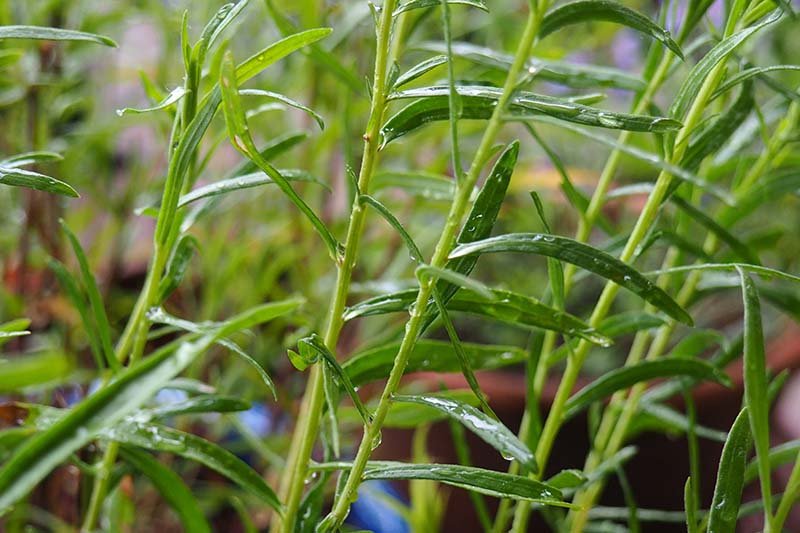
Tarragon isn’t just for cooking—it’s also a beautiful and aromatic addition to gardens. With its slender, green leaves and subtle scent, it adds both style and function to outdoor and indoor spaces.
Garden Benefits
- Aromatic Appeal: Adds a gentle fragrance to patios and herb gardens.
- Pollinator-Friendly: Attracts bees and butterflies during flowering.
- Companion Plant: Grows well near basil, chives, and parsley but away from aggressive mint.
- Low Maintenance: Drought-tolerant and pest-resistant once established.
In containers or raised beds, tarragon brings elegance and practicality to American home gardens—perfect for small urban spaces or sprawling backyards.
8. Creative Uses for Tarragon Beyond Cooking
Tarragon’s unique aroma and beneficial oils make it a multifunctional herb for creative home uses:
- Natural Air Freshener: Boil tarragon leaves with citrus peels to scent your kitchen.
- Herbal Sachets: Dried tarragon adds a calming fragrance to linen drawers.
- Aromatherapy Baths: Add fresh tarragon sprigs to warm bathwater for relaxation.
- Herb-Infused Oils: Mix tarragon with olive oil for a fragrant culinary or massage oil.
- Homemade Candles or Potpourri: Combine dried tarragon with lavender and rosemary for soothing blends.
These creative applications make tarragon both a culinary and sensory delight in American homes.
9. Common Problems and Simple Solutions
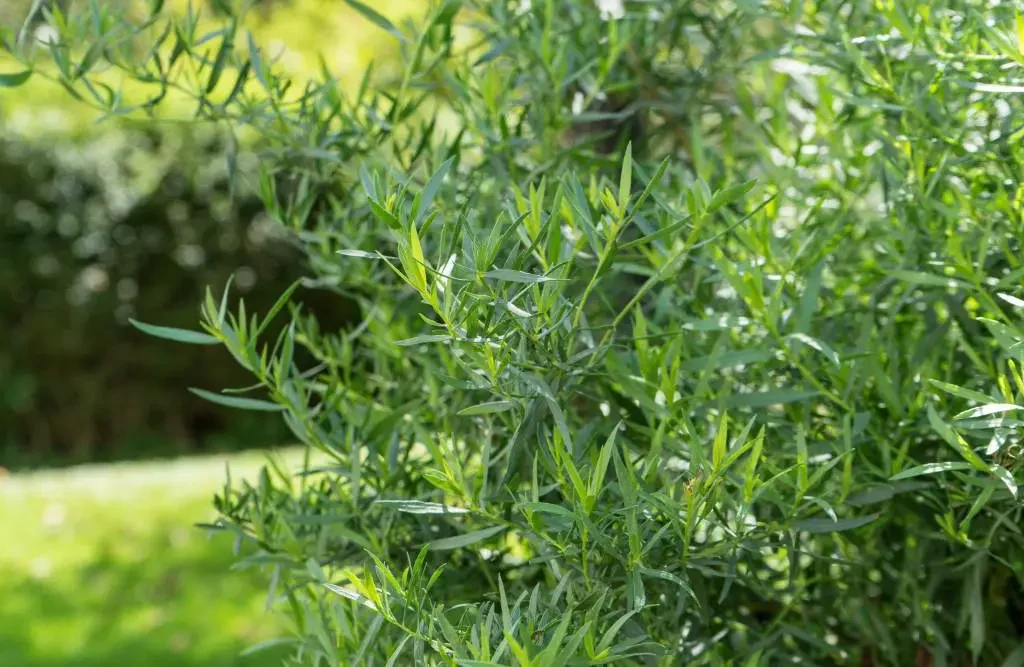
Although tarragon is hardy, it can face challenges like most herbs. Here’s how to keep it thriving:
- Root Rot: Ensure proper drainage—avoid soggy soil.
- Powdery Mildew: Improve air circulation and water early in the morning.
- Weak Flavor: Replace plants every 3–4 years, as older tarragon loses its potency.
- Pests: Watch for aphids; use neem oil or insecticidal soap if necessary.
With minimal attention, tarragon will reward you with lush growth and flavorful leaves season after season.
Conclusion: Why Every American Kitchen Needs Tarragon
Elegant, aromatic, and full of flavor, tarragon is the secret ingredient that turns simple meals into something extraordinary. Its versatility in the kitchen, coupled with its beauty in the garden, makes it a cherished herb for cooks and gardeners across America.
Whether you’re preparing creamy sauces, roasting chicken, or crafting herbal teas, tarragon delivers sophistication and warmth in every dish. Easy to grow, delightful to smell, and delicious to taste—this is truly the herb of elegance and flavor.
So the next time you plan your garden or spice rack, make sure there’s room for tarragon—the little green herb that brings big, beautiful flavor to American homes.
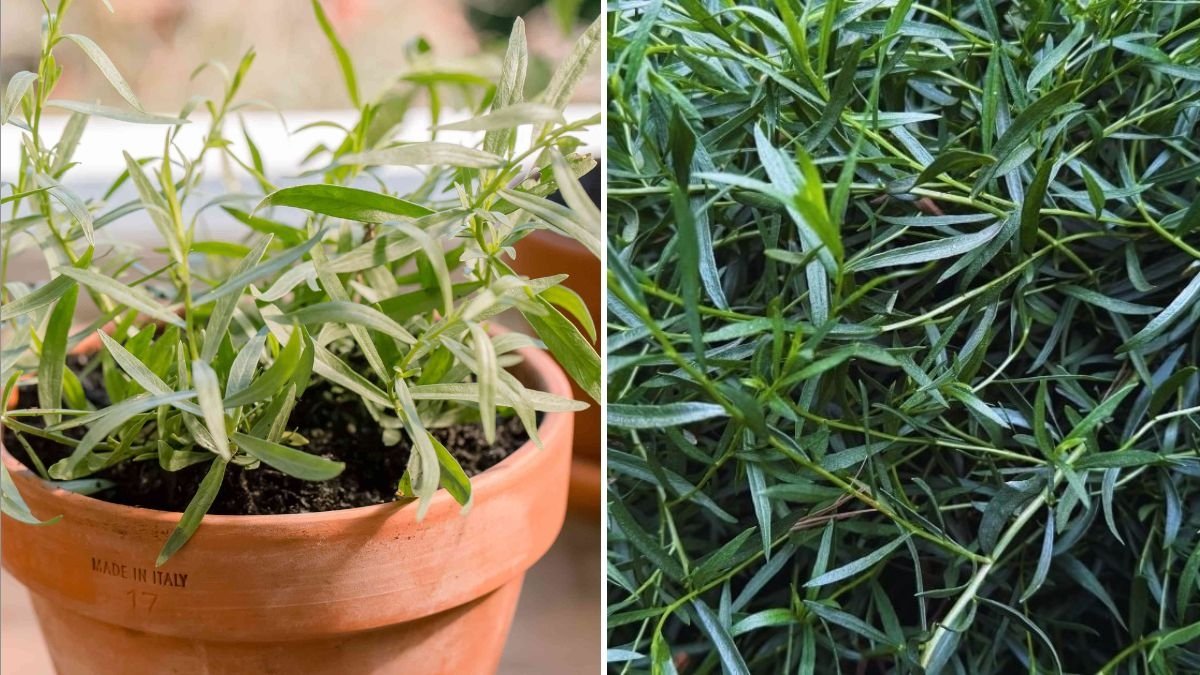



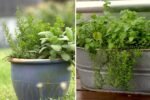

Leave A Comment